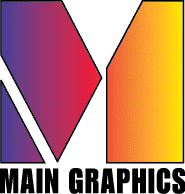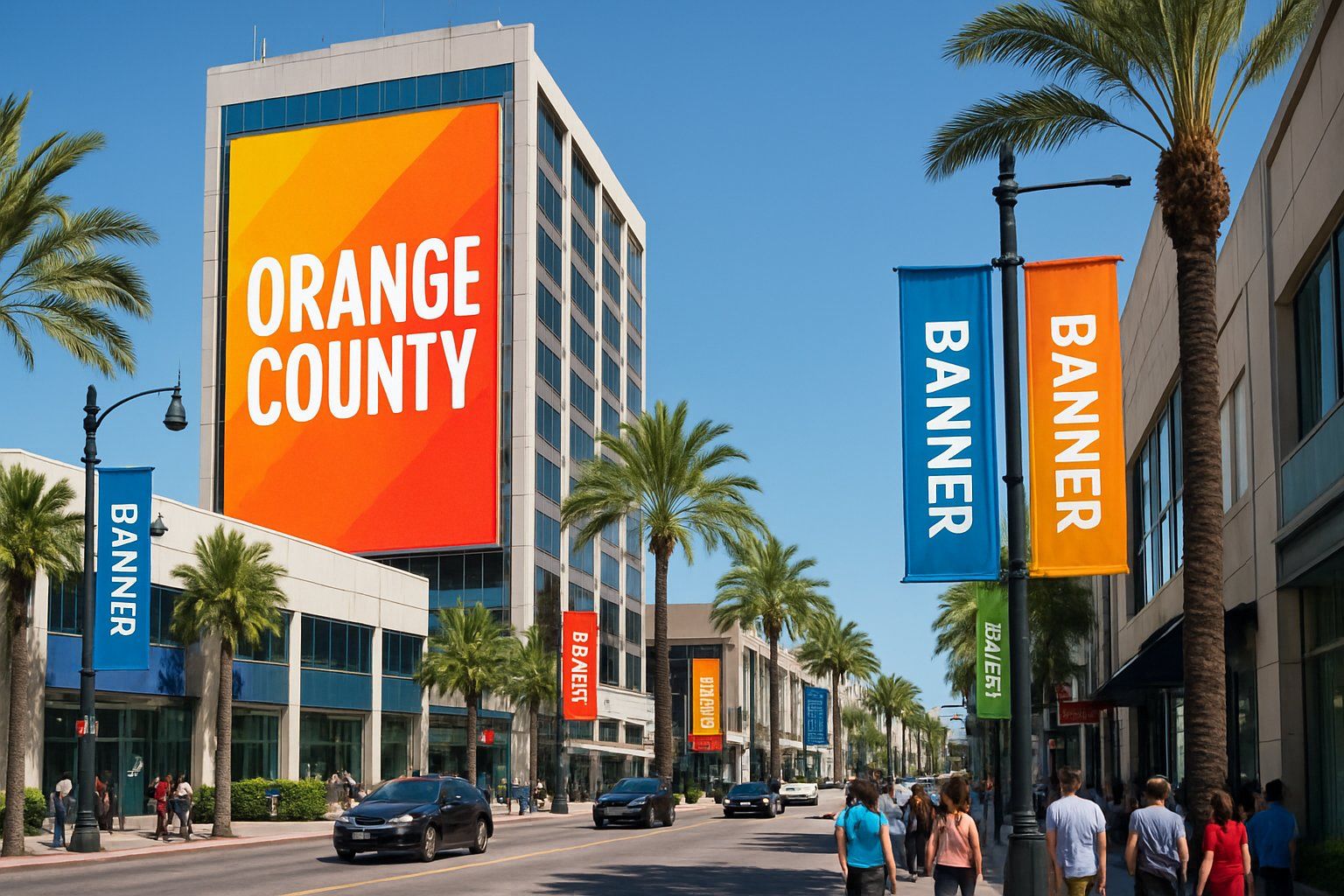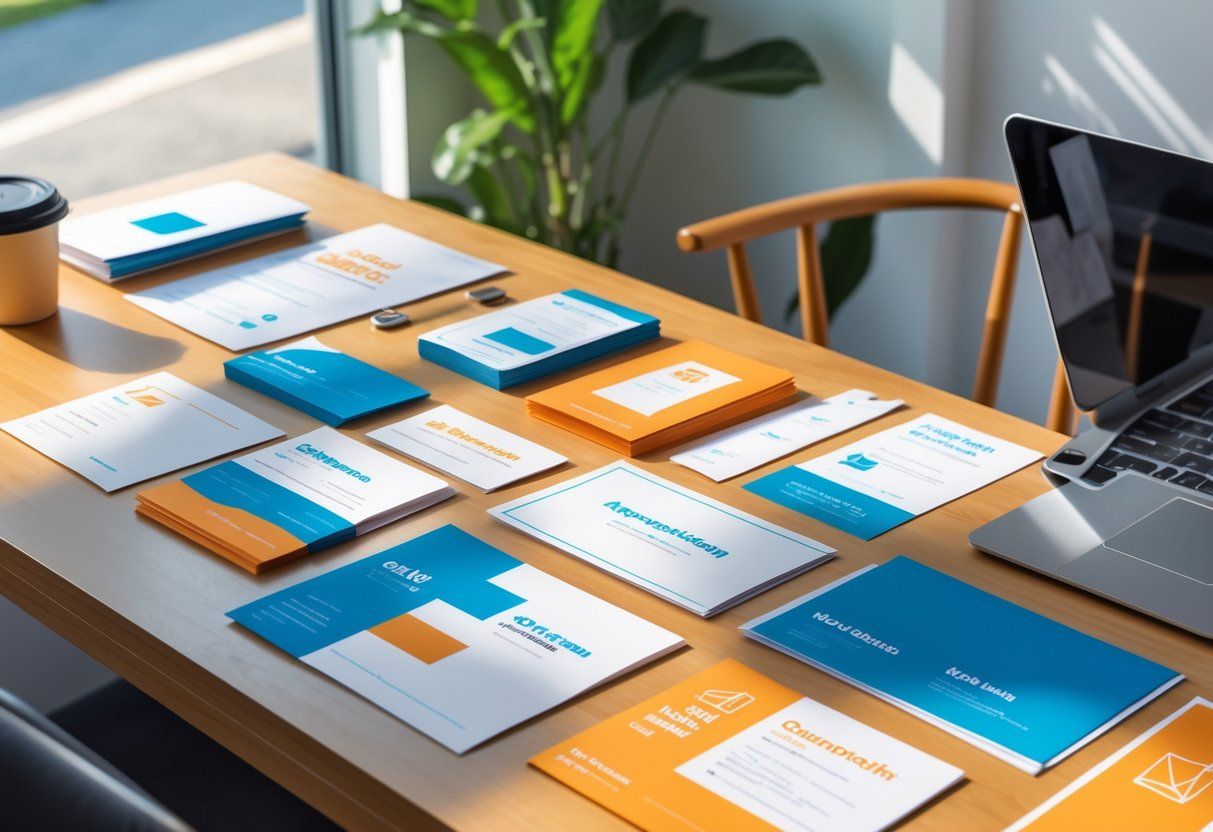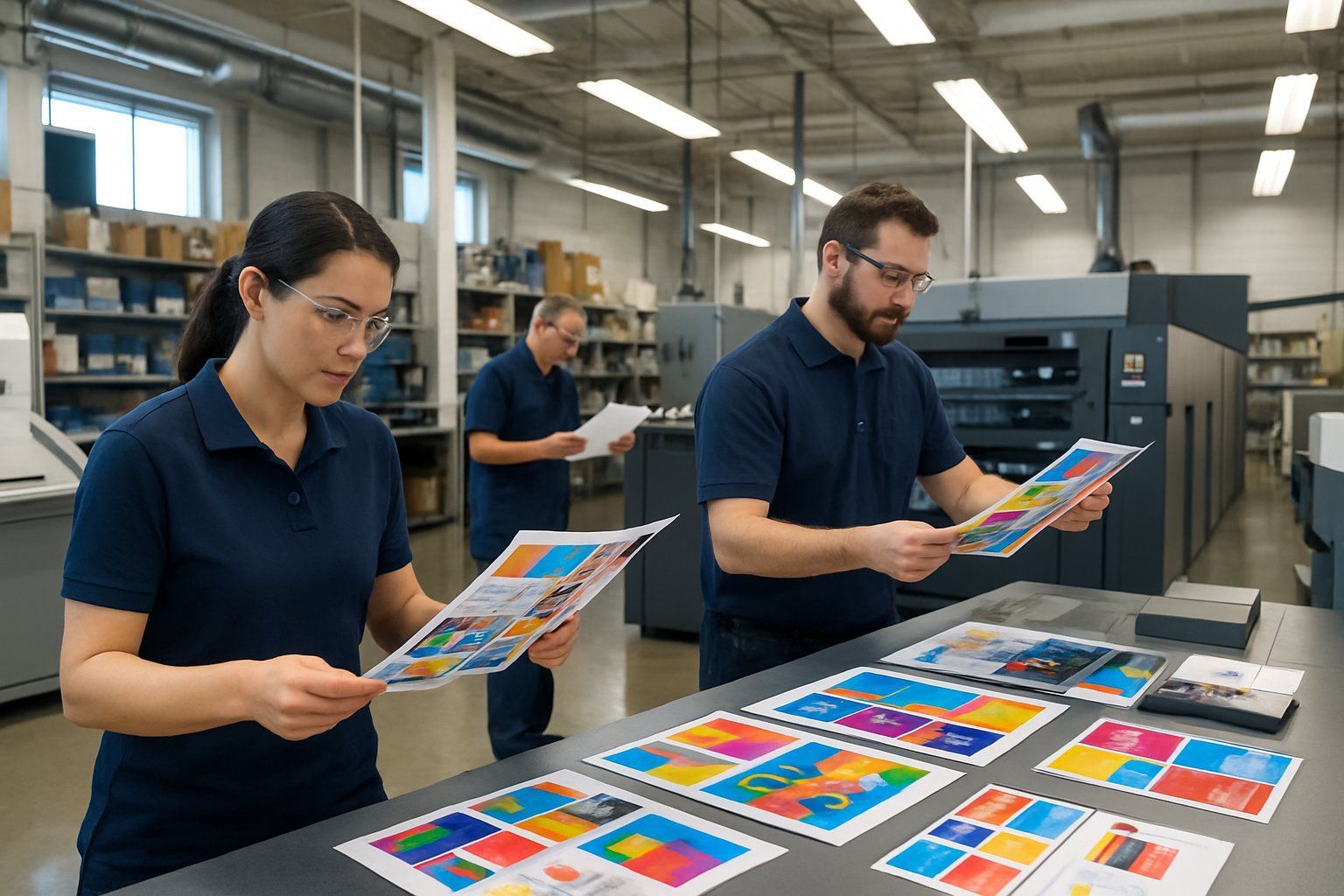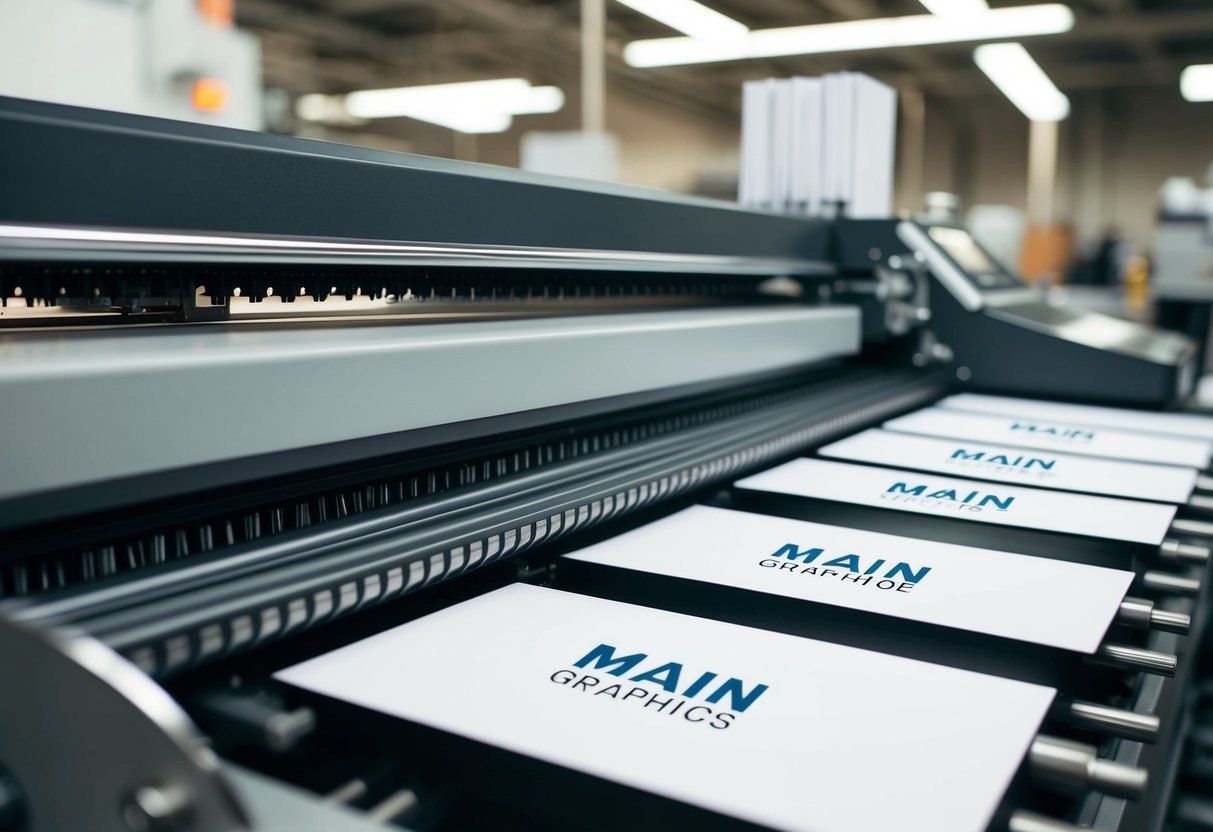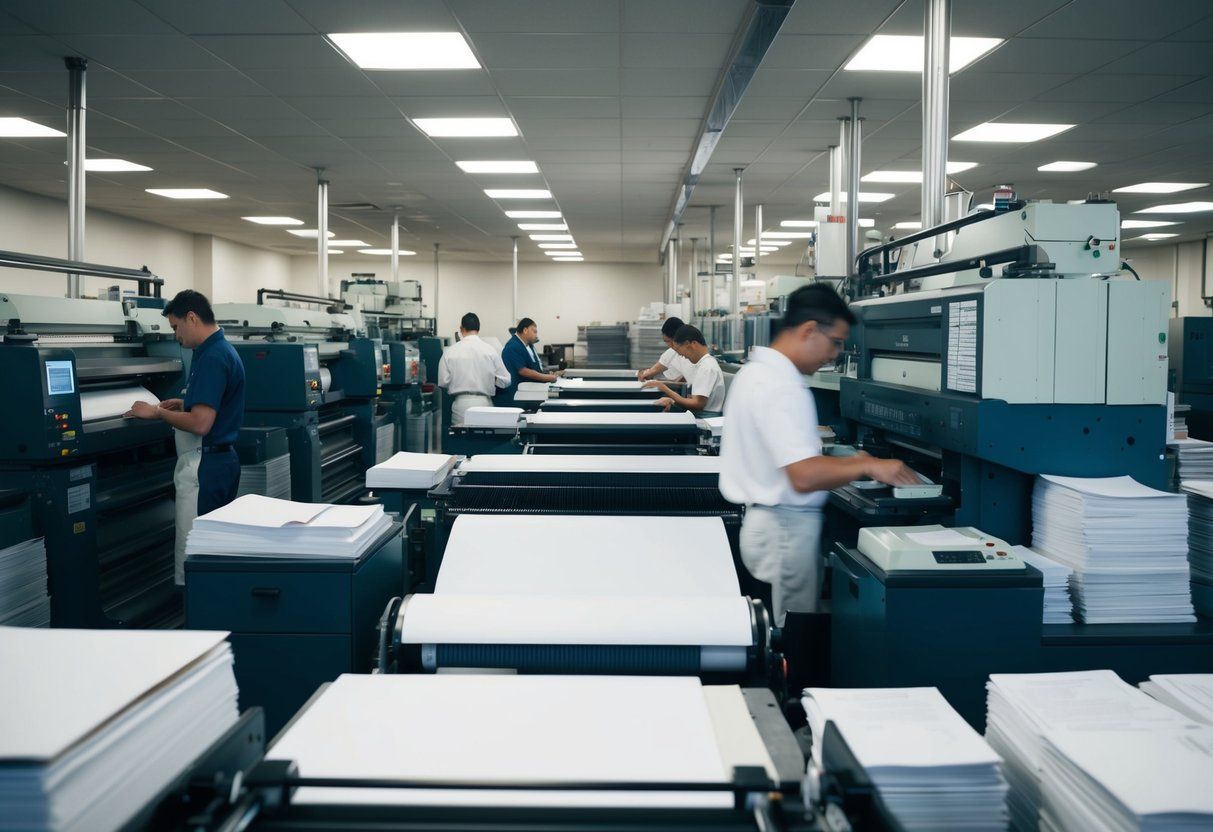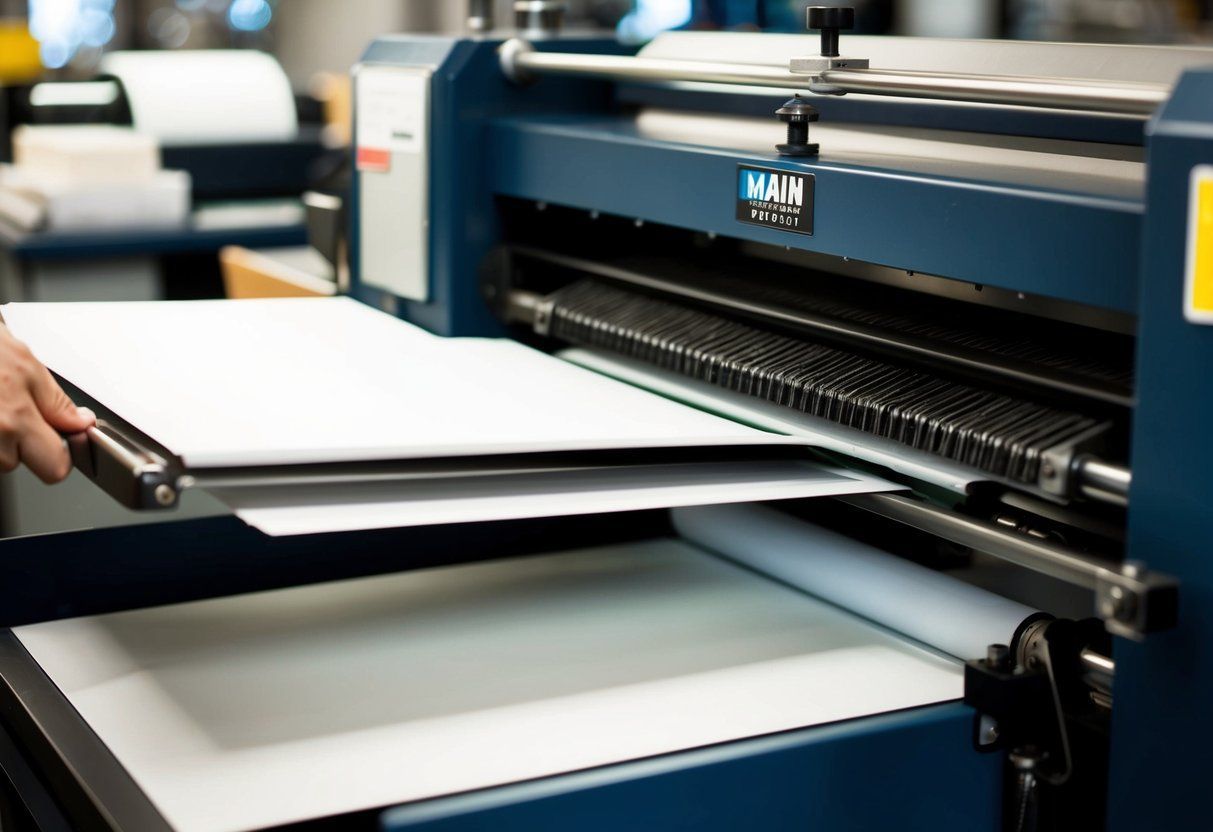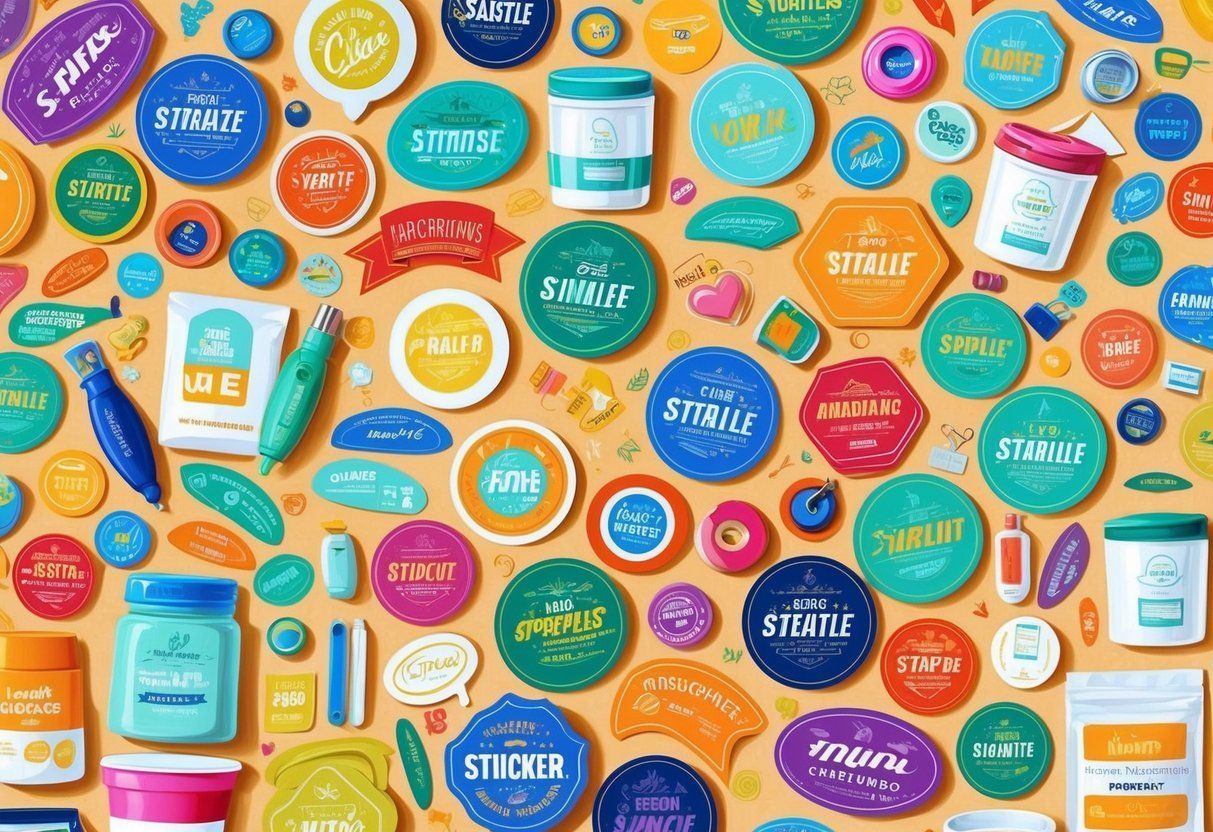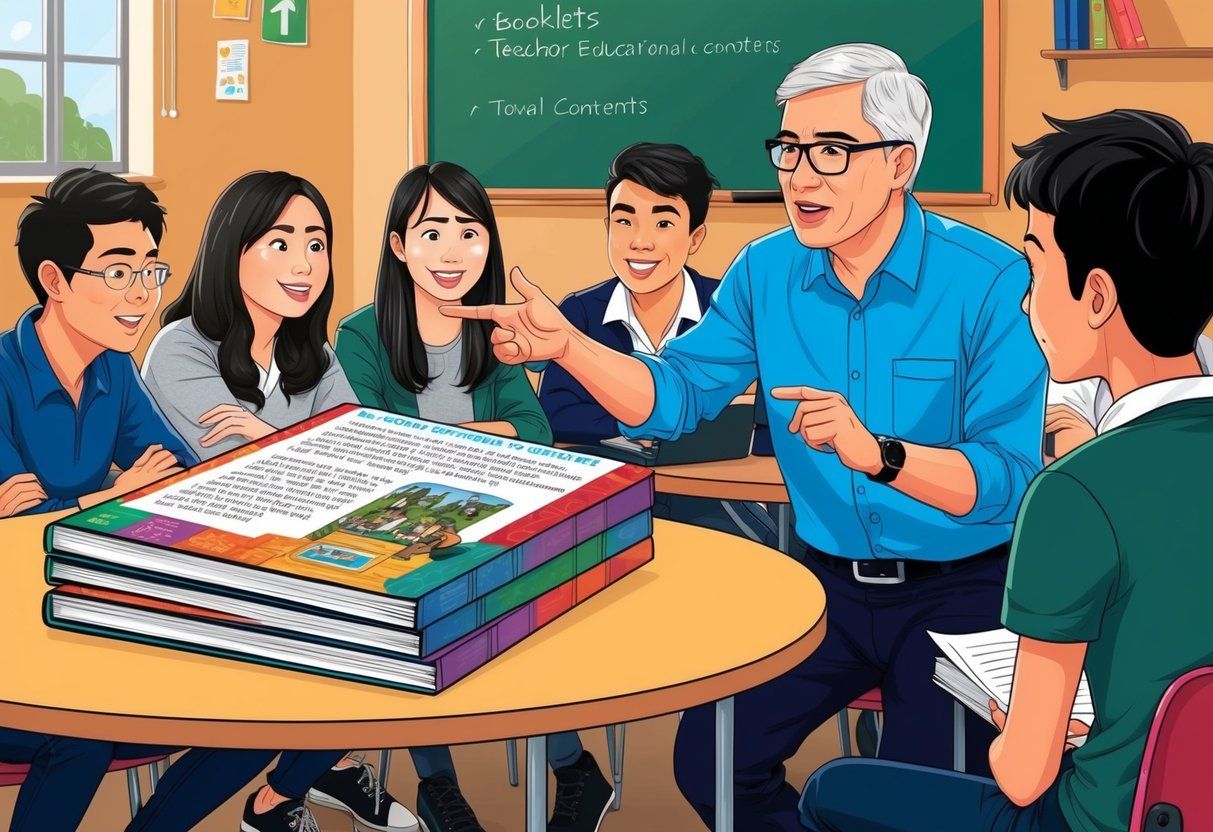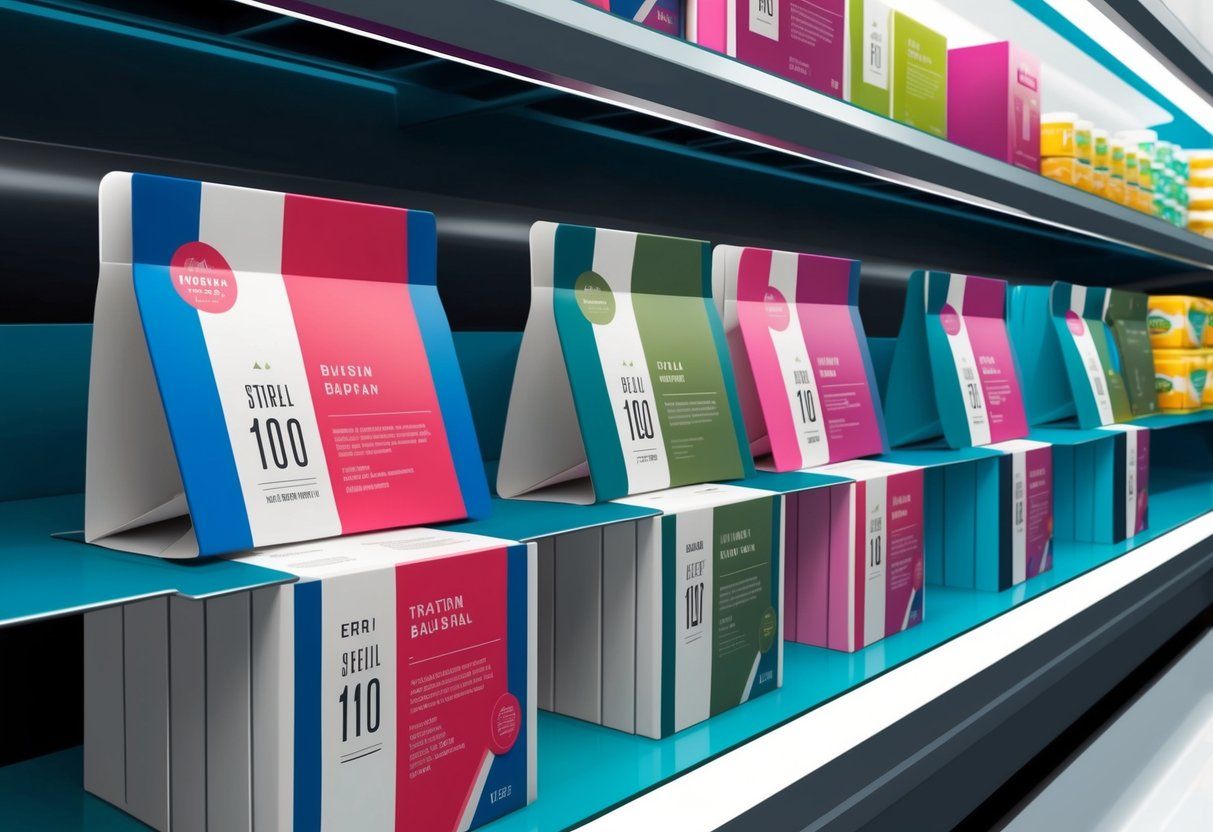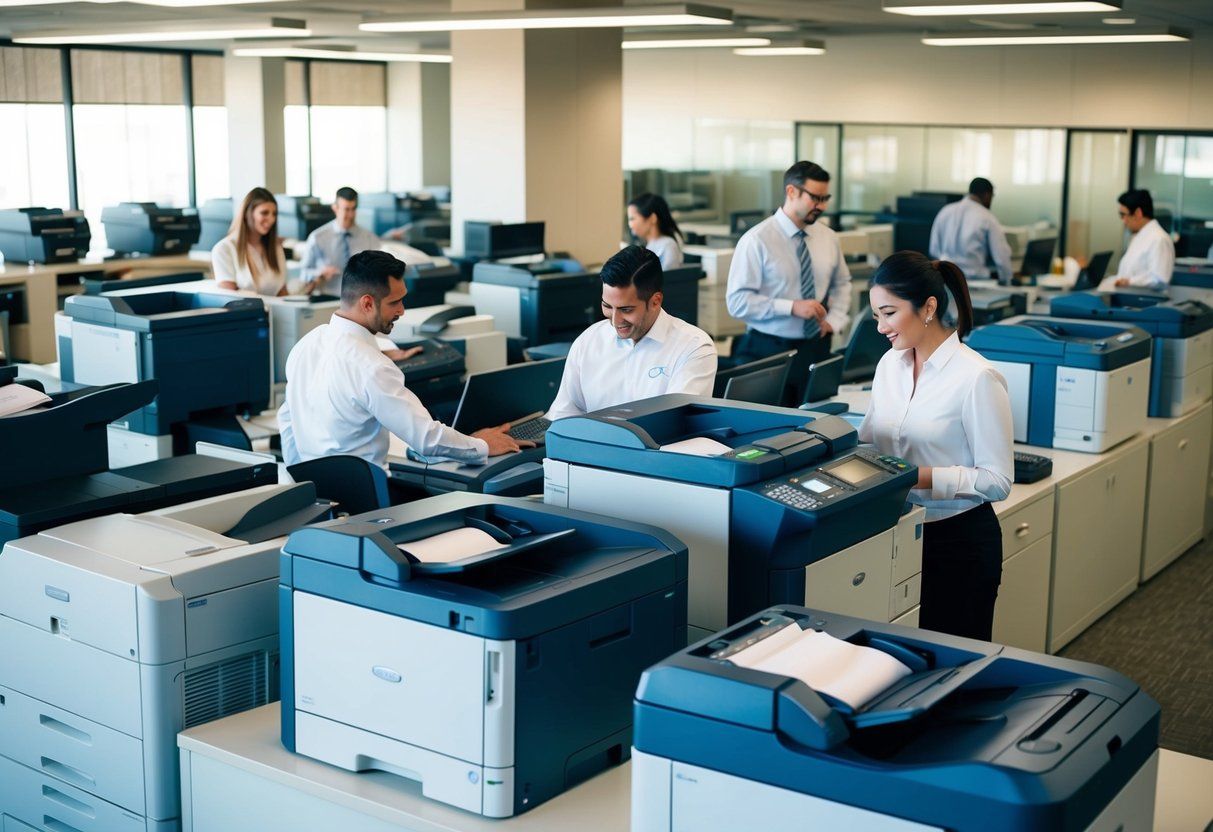Large Format Banners & Posters: Maximizing Impact for Your Branding Needs
Large format banners and posters are an essential marketing tool used to capture the attention of viewers and convey messages at a grand scale. Serving as impactful visual communication, these oversized prints can be found at trade shows, retail displays, outdoor advertising, and corporate events. The importance of large format media lies in their ability to make a statement and leave a lasting impression due to their size and visual appeal.
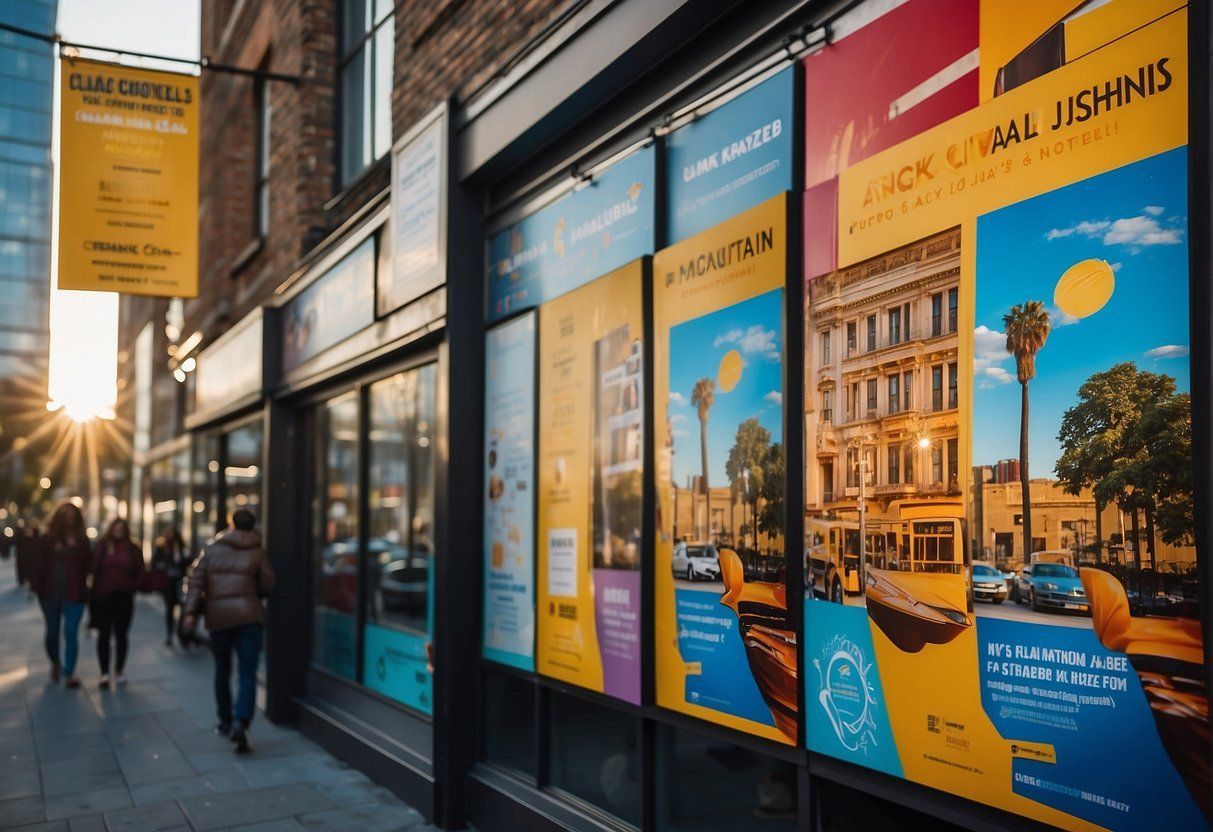
When it comes to creating large format banners and posters, several key factors must be taken into consideration to ensure effectiveness and durability. Graphic design plays a pivotal role in the overall impact, requiring the use of high-resolution images and an understanding of color theory to produce eye-catching results. Material selection and printing techniques also contribute significantly to the final product’s quality. Choosing the right substrate and printing method can mean the difference between a vibrant display that withstands the elements and a lackluster one that fades quickly.
Proper installation and maintenance are crucial to extending the life of large format prints. Mounting methods must be secure and appropriate for the environment, while regular care can preserve the print’s integrity. Additionally, budget considerations include not only the initial costs of printing but also the costs associated with shipping, installation, and potential repairs or replacements over time. Understanding these factors allows for informed decisions that align with marketing objectives and financial constraints.
Key Takeaways
- Large format banners and posters effectively communicate messages and attract attention due to their size.
- Design choices, materials, and printing techniques determine the impact and longevity of these displays.
- Installation, maintenance, and budget are important considerations for maximizing the value of large format prints.
Understanding Large Format Banners & Posters
Large format banners and posters are significant visual tools used in advertising, exhibitions, and public announcements. They are designed to garner attention and communicate messages effectively at a distance. Large format printing is the technology behind these products, capable of producing graphics that are much larger than standard printing sizes.
Digital printing and vinyl printing are commonly used techniques in creating large format displays. These methods ensure high-quality output with sharp images and vibrant colors. Digital printing affords versatility and allows for quick turnaround times, making it suitable for custom orders and short runs.
Materials utilised for large banner printing generally include vinyl, polyester, canvas, and other rugged materials that support long-term use and exposure to the elements. The ink used in this type of printing must be durable and fade-resistant to maintain the quality of the banner or poster over time.
Most printing services offer a variety of options for large format products:
| Printing Option | Best for |
|---|---|
| Digital Printing | Short runs, high detail, variable data printing |
| Vinyl Printing | Outdoor use, durability, larger sizes |
When selecting a banner printer or printing service, considerations should involve the intended use, longevity, and placement of the banner or poster. Large format digital printing services specialize in meeting these needs, providing guidance on the best materials and printing techniques for any specific project.
The key to effective large format banners and posters is not just their size but also the quality of print, the clarity of message, and their placement. They need to be legible from a distance, resistant to environmental conditions if used outdoors, and reflective of the brand or event they advertise.
Designing Impactful Graphics
Creating graphics for large format banners and posters demands attention to detail and an understanding of how visual elements will be perceived from a distance. One must prioritize high-quality images and strategically utilize text and color to create an engaging visual experience.
Image and Graphics Quality
When crafting custom banners, the usage of high-resolution images is crucial. Graphics should be created or obtained at a resolution sufficient for large format printing — typically 300dpi (dots per inch) at the final print size. This ensures when the images are scaled up, they retain their clarity and do not become pixelated.
- Resolution: Use high-resolution images for clarity at large sizes.
- Quality Control: Ensure all graphics are reviewed at full scale for quality assurance.
Text and Visual Elements
The text within banners and posters must be legible and impactful. One should integrate full color and vibrant colors to capture attention while maintaining brand consistency through fonts and style.
- Legibility: Make text large enough to be read from a distance.
- Consistency: Use brand colors and logos consistently for recognition.
Online Design Tools and Resources
Numerous online design tools and resources provide templates and free assets to aid in the design process. These platforms often offer free templates and are equipped with custom size adjustments. Utilizing these tools can aid in creating premium-looking graphics without the need for advanced design skills.
- Accessibility: Use online design tools for a variety of templates and resources.
- Customization: Look for platforms that allow for custom size and color selections.
Working with Professional Graphic Designers
For those seeking a tailored and professional touch, working with graphic designers can elevate the quality of custom banners and posters. A skilled graphic designer will have the expertise to combine vibrant colors, high-quality images, and effective text placement to create dynamic and engaging graphics.
- Expertise: Professional designers have a refined skill set for large format design challenges.
- Collaboration: Communicate your vision and goals to a designer for a personalized outcome.
Materials and Durability
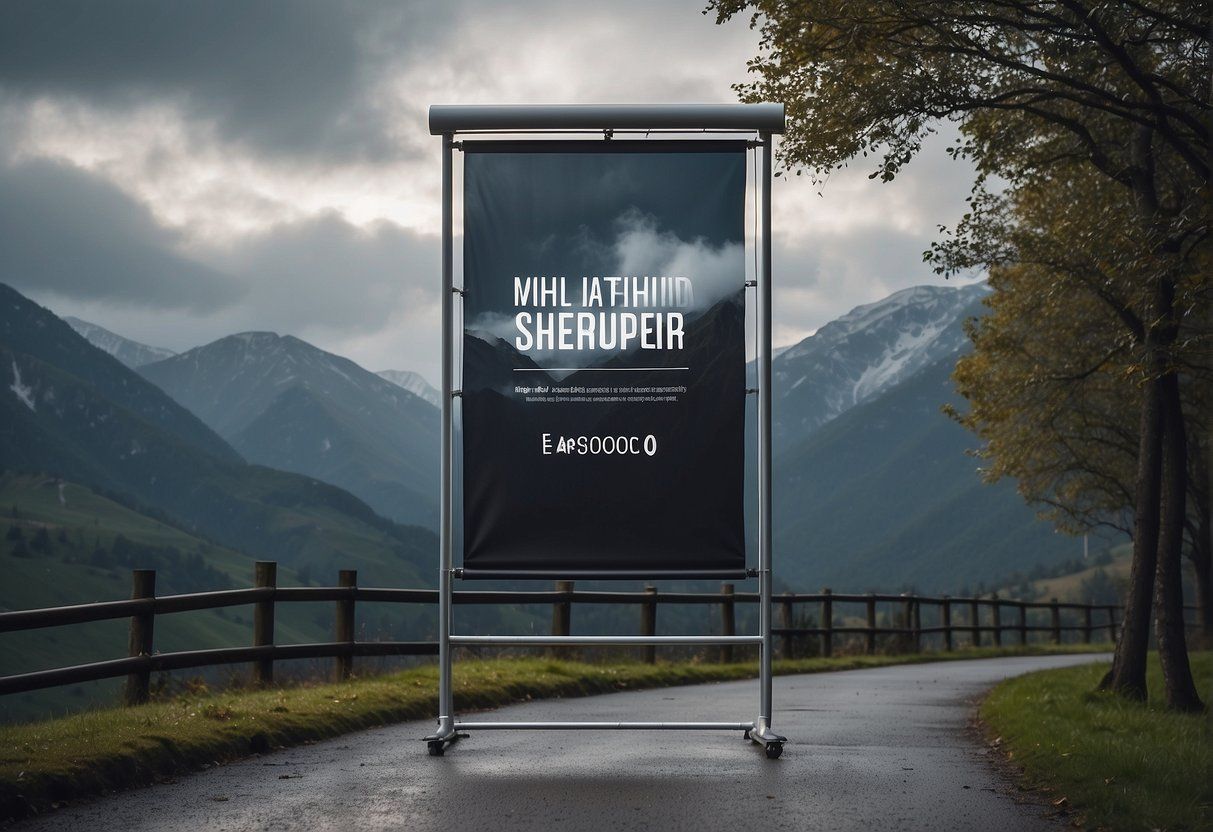
Materials used in large format banners and posters determine their longevity and suitability for varying environments. It is important to evaluate material quality and durability features such as weather resistance and strength.
Choosing the Right Materials
When selecting materials for banners and posters, one must consider the environment in which it will be used. Vinyl banners are a popular choice due to their strength and flexibility. For indoor use, materials like foam core can be sufficient, as they offer a lightweight yet smooth surface for high-quality printing. For outdoor applications where banners are subjected to harsher conditions, a more robust material like 13 oz vinyl is advised because of its waterproof and durable nature, ensuring longevity .
- Retractable banners typically use high-quality, lightweight vinyl, making them portable and easy to use for trade shows and conferences.
- Decals require a strong adhesive backing and are often made from quality vinyl to adhere to various surfaces.
Durability and Weather Resistance
Durability is a key factor, especially for outdoor banners that need to withstand elements such as rain, sun, and high winds. Waterproof vinyl printing technology ensures the banner’s graphics remain vibrant and resistant to water damage. Some banners come equipped with grommets , which are metal rings inserted along the edges that help secure the banner and distribute tension evenly, providing additional resistance against high wind conditions.
- For enhanced weather resistance , choosing a banner with UV-curable inks can lead to a longer-lasting product.
- The standard 13 oz vinyl is known to be tough against the elements, making it a reliable choice for outdoor use.
- For areas with extreme weather, reinforced edges and the use of heavier material or mesh vinyl may be recommended to increase the banner’s resilience.
Printing and Production Techniques
The production of large format banners and posters utilizes advanced printing processes and finishing techniques to ensure high-quality, durable products. These banners and posters are crafted to maintain their integrity and visual impact over time.
Digital Printing Processes
Digital printing stands at the forefront of large format production, providing full color , high-resolution outputs. It employs sophisticated printing services that facilitate the creation of premium-quality graphics with crisp detail and rich color depth. Key attributes of digital printing include:
- Flexibility: Digital printing allows for customized sizes and designs without the need for additional setup costs.
- Speed: It is known for quick turnaround, making it ideal for meeting tight deadlines.
- Eco-Friendly: Many digital printing methods use less ink and solvents, reducing the environmental impact.
The digital printing process typically involves the following steps:
- Pre-Press: Image files are prepared with exact dimensions and resolution.
- Printing: State-of-the-art printers apply UV, solvent, or latex inks directly onto the substrate.
- Curing: Inks are dried or cured using UV light or heat to ensure they adhere properly and are durable.
Finishing Options for Longevity
To enhance the lifespan and functionality of banners and posters, various finishing options are employed. They augment the physical properties of the printed material, offering protection against environmental factors. Popular finishing choices include:
- Laminations: A clear film is applied to the print, providing resistance to UV light, scratches, and moisture.
- Grommets: Metal rings are added to the edges to facilitate easy and secure hanging.
- Pole Pockets: A loop of material is created at one or both ends of the banner to allow for mounting on poles.
- Double Sided Printing: Graphics are printed on both sides of the substrate, often used with opaque materials to prevent show-through.
Each finishing technique is selected based on the intended use and placement of the banner or poster, with a focus on ensuring that it remains vibrant and intact throughout its display period.
Banner and Poster Applications
Large format banners and posters serve a multitude of purposes, vital for advertising, directing foot traffic, informing attendees at events, and enhancing brand visibility.
Indoor vs. Outdoor Uses
Indoor banners , such as retractable banners and step and repeat banners , are often utilized at trade shows and corporate events for their ease of assembly and impact. Vinyl banners with pole pockets can be seen in malls and theaters. Outdoor banners need to withstand elements, thus custom banners made of durable materials are common. They’re visible in grand openings, sporting events, and used as sidewalk signs .
- Indoor
:
- Trade shows: Retractable banners, Banner stands
- Conferences: Step and repeat banners, Wall decals
- Corporate Events: Floor graphics, Window graphics
- Outdoor
:
- Sporting Events: Flags, Custom banners with pole pockets
- Grand Openings: Vinyl banners, Sidewalk signs
- General Use: Durable vinyl banners, Directional signs
Event-Specific Banners
Custom banners are tailored for specific events to guide attendees and promote sponsors. At sporting events , large flags and banners mark entrances and team areas. Conferences often feature retractable banners that highlight speakers and sessions, while trade shows leverage step and repeat banners for photo opportunities and brand reinforcement.
- Sporting Events: Event-specific flags, Entrance banners
- Conferences: Retractable banners, Session information displays
- Trade Shows: Step and repeat banners, Branded banner stands
Commercial and Real Estate Signage
Commercial signage is crucial for advertising and creating brand exposure . Real estate utilizes custom banners and signs which include sale , open house , and directional signs to navigate clients. Vinyl banners can announce a grand opening or a specific call to action .
- Commercial: Sale banners, Advertising graphics
- Real Estate: Open house signs, Directional signs for properties
Advertising and Brand Exposure
Large format banners maximize brand exposure . Flags and pole banners are commonly placed in high traffic areas to attract attention. Window graphics and floor graphics in stores prompt calls to action, such as a sale . Sidewalk signs capture the attention of passersby, directly influencing foot traffic .
- Traffic Areas: Pole banners, Flags
- Store Interiors: Window graphics, Floor graphics
- Sidewalks: Sidewalk signs, Sale promotions
Installation and Care
Installing and maintaining large format banners and posters is crucial for their durability and the clarity of their message. Proper techniques ensure banners stay secure and visible, while regular maintenance preserves their condition over time.
Proper Banner Installation Techniques
To guarantee that banners remain affixed and presentable, one must follow several essential installation steps. For sidewalk signs and banner stands, select robust supports capable of withstanding weather conditions and pedestrian interaction.
- Sidewalk Signs
:
- Position on a flat, stable surface to prevent tipping.
- Use heavy bases for wind resistance.
- Ensure the sign is visible from a distance without obstructing foot traffic.
- Banner Stands
:
- Assemble stands according to the manufacturer’s instructions.
- Secure banners evenly to prevent sagging.
- Place stands in strategic locations for maximum visibility.
Maintenance and Care for Longevity
Consistent care prolongs the life of banners and posters, retaining their vibrancy and legibility. Care entails regular cleaning and inspection to address wear and tear immediately.
- Cleaning
:
- Gently wipe with a damp, soft cloth; avoid harsh chemicals.
- Clean both the banner material and its supports.
- Inspection
:
- Check for damages such as tears or fading.
- Examine all installation points to ensure they remain intact.
By adhering to thorough installation and care practices, one can significantly extend the lifespan and impact of large format banners and posters.
Costs and Budget Considerations
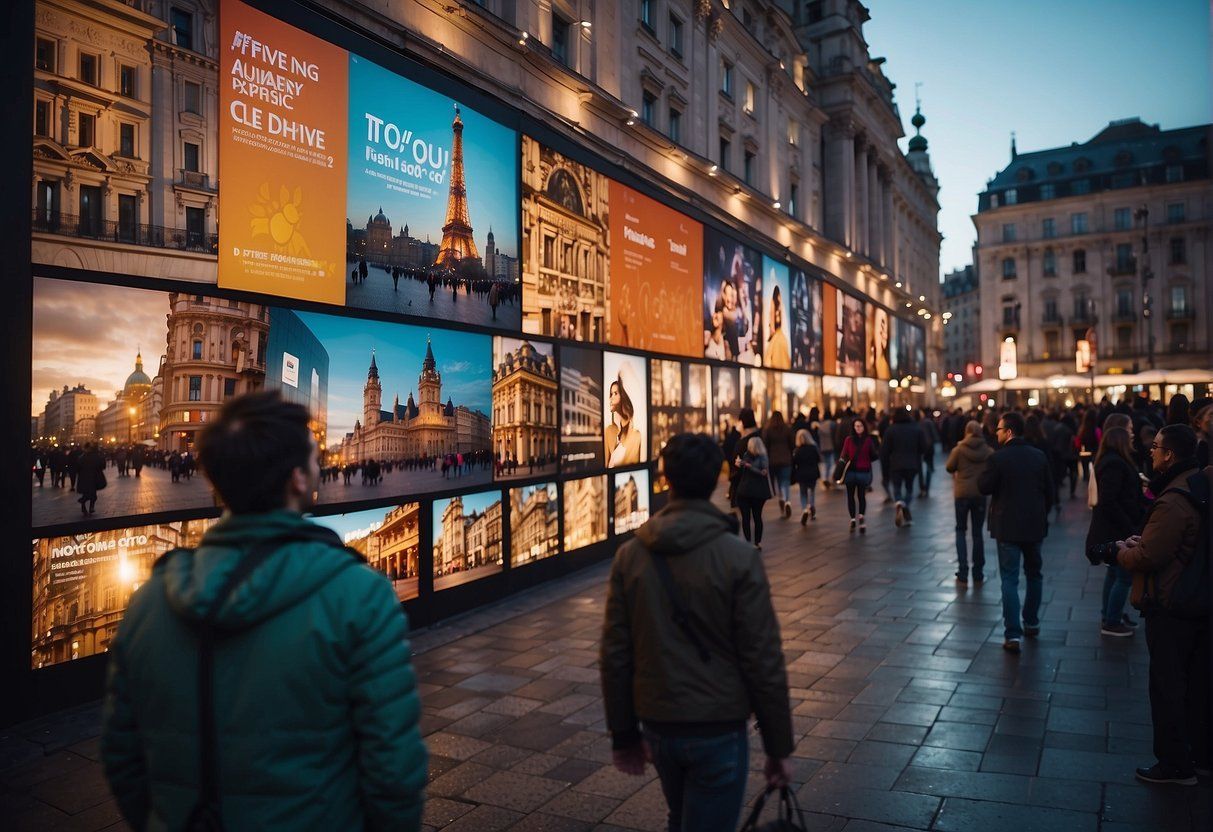
When evaluating costs and budget considerations for large format banners and posters, one must be thorough. Gathering accurate price estimates and weighing the importance of quality against budget constraints are fundamental steps.
Getting a Price Quote
To acquire a detailed price quote, individuals should provide the printer with specific information such as dimensions , material , and quantity of the banners and posters desired. A comprehensive breakdown can typically be requested, highlighting:
- Base Material Cost: The price for the substrate used in the banner or poster.
- Printing Cost: Determined by the size and complexity of the graphic.
- Finishing Costs: This includes lamination, grommets, or hemming if applicable.
Inquiring about bulk order discounts can be financially advantageous, as printers often reduce the cost per item for larger quantities.
Balancing Quality with Budget
Achieving a balance between quality and budget requires analyzing the trade-offs between various printing options and their impact on cost. Considerations may include:
- Ink Type: Eco-solvent inks are durable but may be costlier than water-based inks.
- Print Resolution: Higher resolutions yield better quality but add to the price.
- Material Durability: Heavy-duty materials last longer but might stretch a modest budget.
By scrutinizing these variables, one can determine the most cost-effective approach to produce a banner or poster that meets both quality standards and budgetary limitations.
Shipping and Customer Service
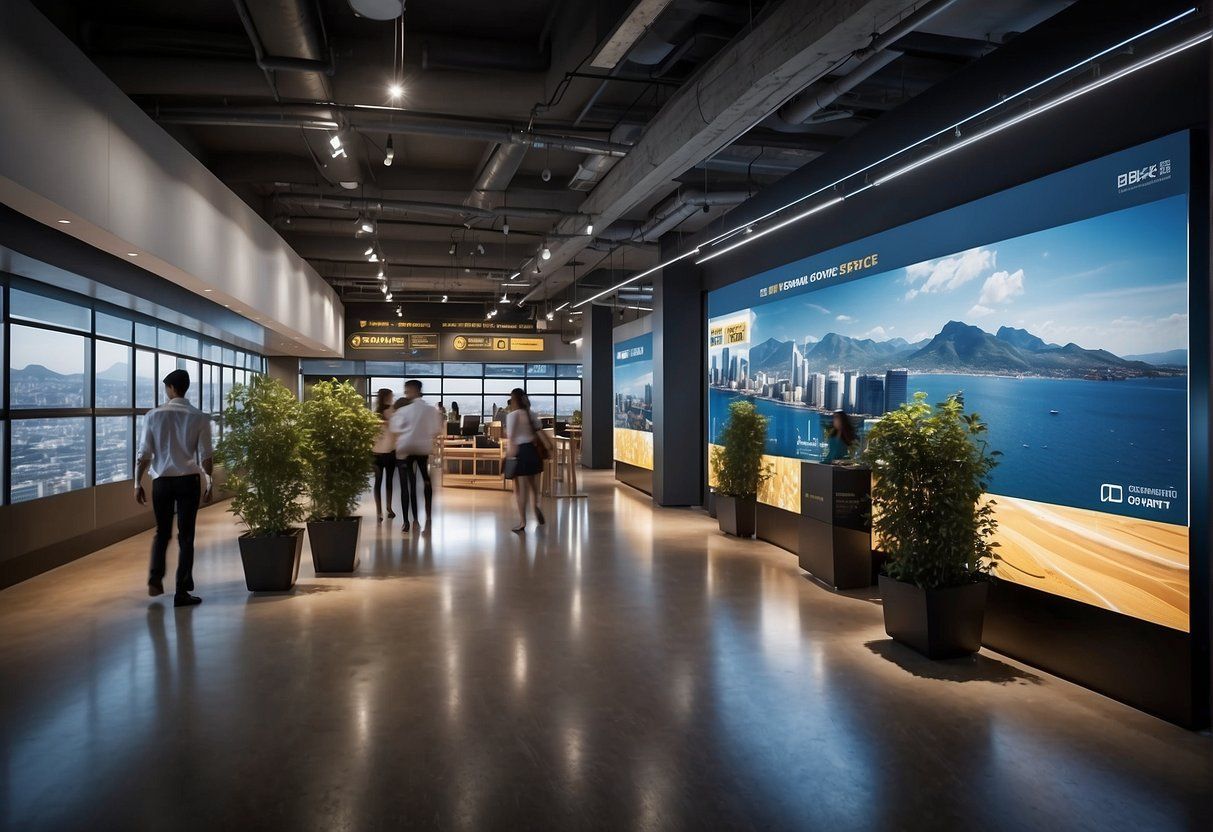
Providing reliable customer service and efficient shipping is crucial for the satisfaction of customers purchasing large format banners and posters.
Turnaround Time and Shipping
When customers place an order for large format banners and posters, they can typically expect a turnaround time from production to shipping of 2-5 business days . Expedited options may be available, resulting in faster processing and a shorter wait period. Shipping is often conducted through established courier services, and the cost can vary depending on the dimensions and weight of the package along with the destination.
- Standard Shipping: Delivers within 5-7 business days after dispatch.
- Expedited Shipping: Offers a quicker delivery, usually within 2-3 business days after dispatch.
Customer service teams are committed to assisting with any questions or issues that may arise during the shipping process. Customers can call the service department on any business day to get real-time updates on their orders.
They are trained to guide customers on:
- Tracking Shipments: Providing tracking numbers and assistance with navigating the courier’s tracking system.
- Addressing Delays: Offering updates and solutions if unforeseen delays occur.
- Packaging Queries: Giving information on how orders are packaged and instructions for handling upon receipt.
Frequently Asked Questions
In this section, readers will find clear and concise answers to common inquiries regarding large format banners and posters.
Common Questions About Large Format Printing
What materials are typically used for large format banners and posters?
Large format banners and posters are often printed on vinyl, fabric, or paper. Vinyl is durable and weather-resistant, making it suitable for outdoor use, whereas fabric banners are lightweight and have a high-quality print finish, ideal for indoor environments like trade shows. Paper posters are common for short-term use and are typically more cost-effective.
Can large format prints be used outdoors? Are they weatherproof?
Yes, large format prints can be designed for outdoor use. Manufacturers generally use waterproof and UV-resistant inks and materials, such as vinyl and certain fabrics, to enhance durability against elements like sun, wind, and rain.
What are the typical sizes for large format printing?
Sizes for large format printing vary, but common dimensions include:
- Trade Show Displays: Often range between 8 to 10 feet in height.
- Pop-Ups: Can vary greatly, with sizes extending up to 20 feet in length for dramatic effect.
- Banners: Customizable lengths with typical heights of 3 to 4 feet for mounting.
How long does it take to produce a large format banner or poster?
Production times can vary greatly depending on the complexity and size of the project. Simple banners may take a few days, while intricate trade show displays might require weeks of preparation. Customers should consult with their print service provider for specific timelines.
What is the best way to transport and set up large format prints for events?
For trade show displays and pop-ups, portable carrying cases are typically provided by manufacturers for ease of transport. These displays are designed to be easily assembled and disassembled by the customer with minimal tools. Banners can be rolled and carried in tubes to prevent creases.
Closing Remarks
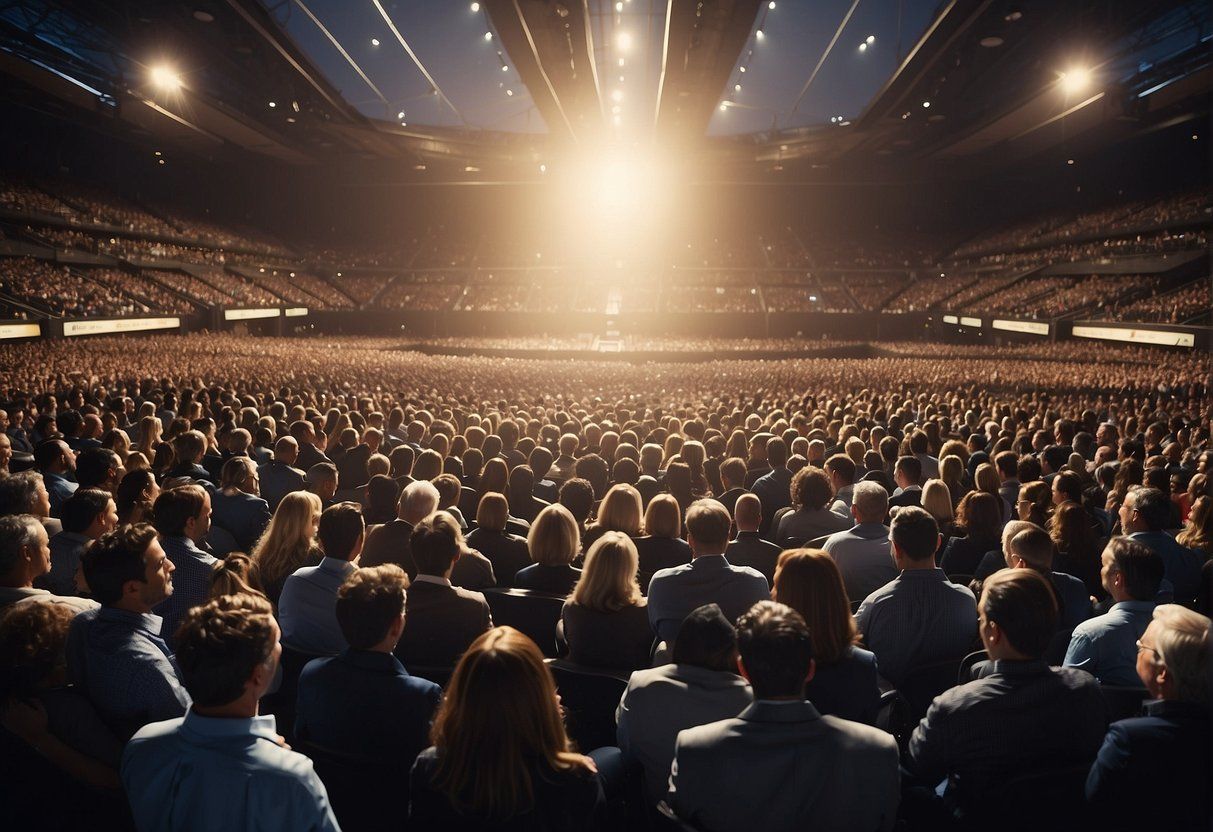
Large format banners and posters serve as effective tools for visual communication . Businesses and organizations rely on them for their:
- Visibility : Seen from a distance, they capture attention.
- Durability : Materials like vinyl ensure they withstand various conditions.
- Adaptability : Suitable for most events and promotional needs.
Advancements in Technology
The printing industry’s strides have made customization and quality more accessible:
| Aspect | Benefit |
|---|---|
| Resolution | High-definition graphics with clarity |
| Ink Technology | Longer-lasting colors resistant to fade |
| Speed | Quicker production turnaround |
Considerations for Buyers
Consumers should assess:
- Size requirements : Impact versus practicality
- Material choice : For longevity based on usage
- Design elements : To ensure message effectiveness
Sustainability Practices
An emerging trend is the focus on environmentally friendly materials and practices. Consumers increasingly seek out:
- Recycled or biodegradable materials
- Eco-solvent or water-based inks
Carefully designed large format banners and posters not only inform or advertise but also contribute to an aesthetic environment. They reflect a brand’s professional image and marketing finesse.
Frequently Asked Questions
Large format banners and posters are versatile marketing tools, and the following frequently asked questions provide insights into choosing the right materials and dimensions for specific needs, as well as finding reputable providers.
What considerations are important for selecting materials for large banners and posters meant for outdoor use?
Materials for outdoor banners and posters should have weather-resistant qualities such as UV protection and waterproofing. They should also be durable enough to withstand wind, rain, and prolonged sun exposure without losing color or integrity.
What is the price range for large format banners and posters?
The cost of large format banners and posters varies widely based on size, material, and printing specifications, ranging anywhere from a few dollars to several hundred dollars.
How do you determine the appropriate size for a banner or poster for a particular event or building facade?
The size of a banner or poster should be determined by its visibility from a distance, the space available on a facade, and the scale of the surrounding environment. It should be large enough to be read clearly by its intended audience.
What file specifications are recommended for printing high-quality large format banners and posters?
Files for printing should be high resolution, typically 300 dpi or higher, and in a vector format such as .eps or .ai to ensure clarity and quality when scaled up for large prints. The color mode should be CMYK to match the printing process.
What are the differences in durability between various types of large outdoor banners?
Vinyl banners are generally more durable and better suited for long-term outdoor use compared to fabric or paper banners. Mesh vinyl is often used in windy conditions to reduce resistance and increase longevity.
How can I find a reputable provider for large format banners and posters online?
A reputable provider can usually be identified by their customer reviews, the quality of their portfolio, clear communication regarding customization and pricing, and their willingness to provide material samples. Look for providers that specialize in large format printing and offer customer support.…
